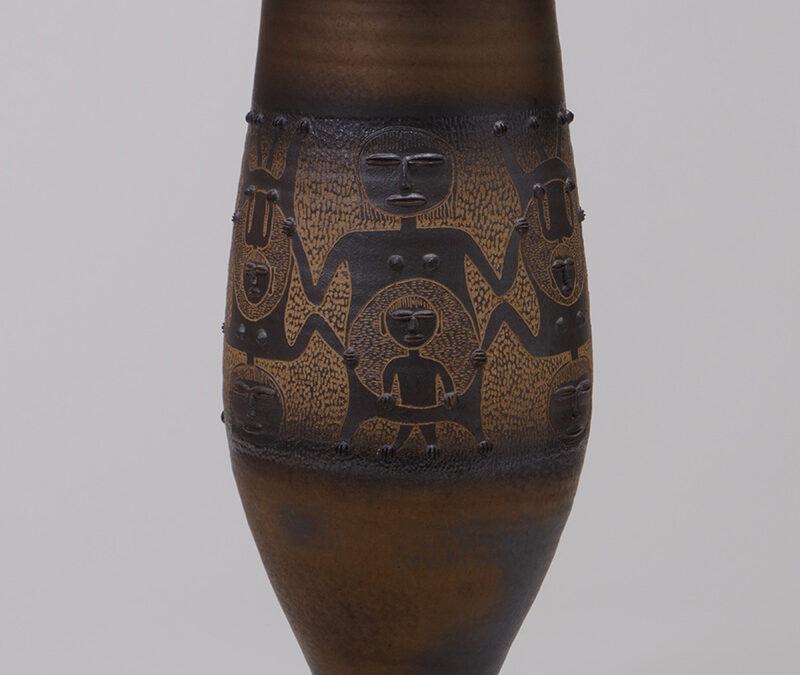
| Maker | Mary Scheier (American, 1908–2007), Edwin Scheier (American, 1910–2008) |
| Date of Creation | c. 1960 |
| Location | Made in Mexico; Used in Green Valley, Arizona |
| Materials | Clay |
| Institution | Currier Museum of Art |
| Credit Line | Bequest of Isadore J. and Lucille Zimmerman |
| Accession Number | 1988.7.108 |
| Photo Credit | © Edwin and Mary Scheier Archive, Currier Museum of Art. |
Mary Scheier and Edwin Scheier had a profound impact on American studio pottery while working in a variety of regions, including New York, Virginia, Kentucky, North Carolina, Tennessee, Arizona, and Mexico. Mary Scheier was born Mary Goldsmith in 1908 in Salem, VA. She attended local schools before going to New York City to study art at the Grand Central School of Art, the Art Students League, and the New York School of Fine and Applied Art. In 1930, she traveled to Paris to complete her education. After her return to the United States, she worked odd jobs for several years before receiving an appointment as director of the Big Stone Gap and Abingdon Art Centers, art galleries in Virginia established under the Works Progress Administration (WPA) Federal Art Project. Edwin (Ed) Scheier was born in 1910 to German immigrant parents in the Bronx, NY. After graduating from the New York School of Industrial Arts, he taught crafts and developed puppet shows for the Works Progress Administration (WPA) Federal Art Project and Federal Recreation Project. While serving as field supervisor for the Federal Art Project in Kentucky, Virginia, and North Carolina, he met Mary, whom he married in August 1937. Shortly after their wedding, the Scheiers resigned their positions with the WPA and became traveling puppeteers. A few months later, Ed took a job as director of the Anderson County Federal Art Center in Norris, TN. While living in Norris, the Scheiers began to work with clay at the Tennessee Valley Authority Ceramic Laboratory. They established their own pottery first at the art center and then in the town of Glade Spring, VA. In 1940, the Scheiers won second prize at a national pottery exhibition held at the Syracuse (NY) Museum of Fine Arts. Not long afterward, they were offered teaching positions at the University of New Hampshire, where they remained for much of their active careers. Over the next two decades, the Scheiers won numerous awards and prizes for their work, which appeared frequently in museum exhibitions. In 1948, they staged their first retrospective at the Currier Museum (then Gallery) of Art. After spending time in Mexico, the Scheiers moved to Green Valley, AZ, in 1978. The Scheiers’ significant contributions to American studio pottery have been widely recognized.

